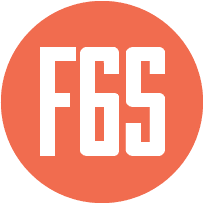8. Community & Social:
a. Chat System:
-
WebRTC Integration: Utilizing WebRTC will allow for peer-to-peer, real-time communication. This includes text, voice, and even video chat capabilities directly within the game without relying on third-party servers.
-
In-game Command Execution: Integrate the chat with game mechanics. For instance, players could type a command to showcase an item, share a location, or even execute in-game skills or abilities.
-
Client/Server Operations: Allow players to control certain aspects of their game client/server directly through the chat interface. For example, they could adjust settings, manage resources, or initiate certain server-side processes.
-
Moderation & Reporting: Implement robust moderation tools. Moderators should be able to mute, kick, or ban users for inappropriate behavior. Players should also have an easy way to report disruptive behavior, which can then be reviewed by game administrators or automated systems.
-
Custom Chat Channels: Beyond public and private channels, allow players to create custom channels based on interests, in-game events, or specific activities.
b. Guilds & Groups:
-
Guild Land Registration: Integrate the guild system with the chunk registration process. Allow guilds to collectively own, manage, and develop land. These communal areas can serve as guild headquarters, meeting points, or shared resource areas.
-
Hierarchical Permissions: Within the guild, establish a hierarchy of roles, each with its own set of permissions. For example, guild leaders could have the ability to initiate land purchases, while members might only be able to contribute resources or participate in guild-specific events.
-
Upkeep & Management: Establish a system where communal land requires maintenance, which can be paid for using energy tokens. Guild members can contribute to this upkeep, ensuring the land remains under the guild's control. If the upkeep isn't maintained, the land could face degradation, lose value, or even be put up for public claim after a certain period.
-
Guild Activities & Events: Organize special in-game events exclusive to guild members or initiate inter-guild competitions. These could be tied to the land they own, such as defending it from invaders or developing it for certain rewards.
c. Leaderboards & Achievements:
-
Dynamic Rankings: Display leaderboards based on various game metrics. This could include resources collected, battles won, land owned, or contributions to the community.
-
Achievement System: Recognize and reward players for reaching specific milestones or accomplishing unique challenges. These achievements can be showcased on player profiles, guild halls, or communal areas.
-
Tangible Rewards: Beyond mere recognition, tie achievements to tangible in-game rewards. This could be special items, additional energy tokens, or unique in-game capabilities.
-
Social Sharing: Allow players to share their achievements on social media or within the game's community platforms. This not only gives them bragging rights but also serves as organic promotion for the game.
Conclusion:
By deeply integrating community and social aspects with the game's core mechanics, you're ensuring that players are not just passive participants but active contributors to the game's ecosystem. Such a system fosters cooperation, competition, and a sense of ownership, making the virtual world more engaging and vibrant.

